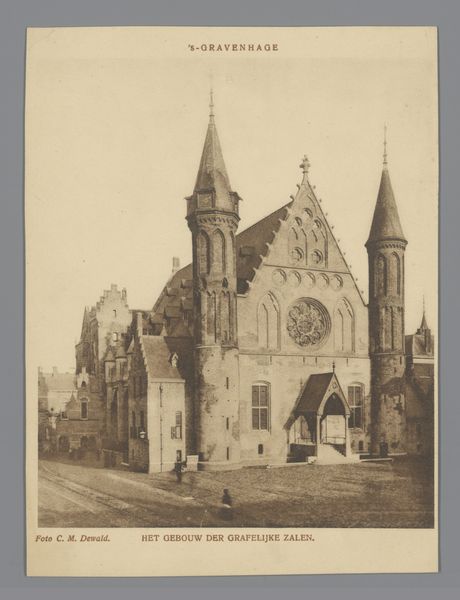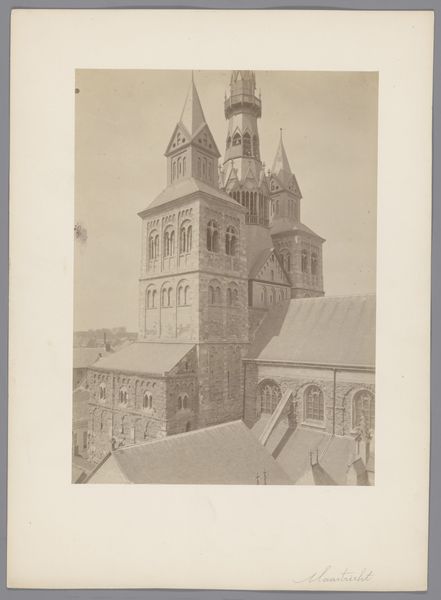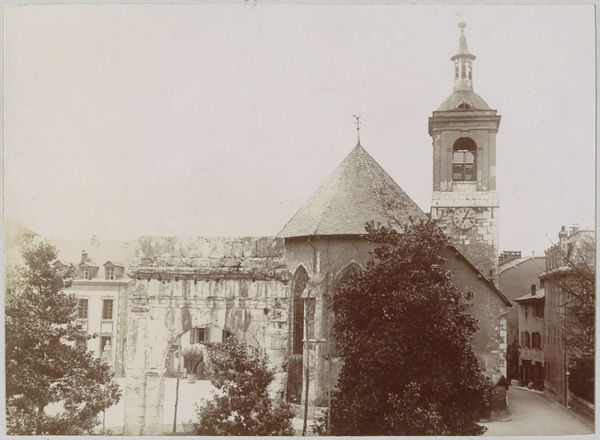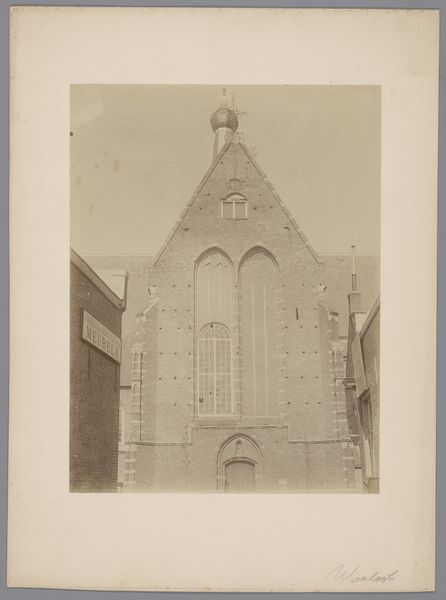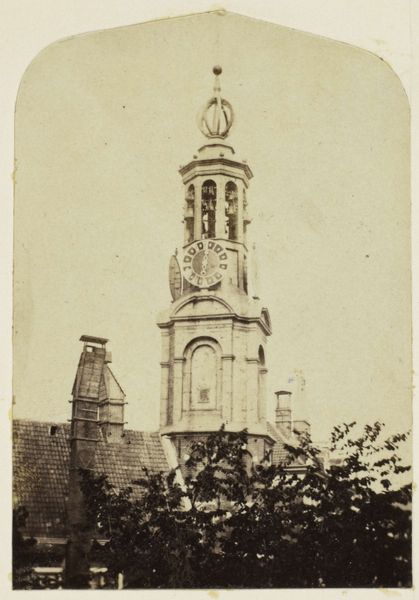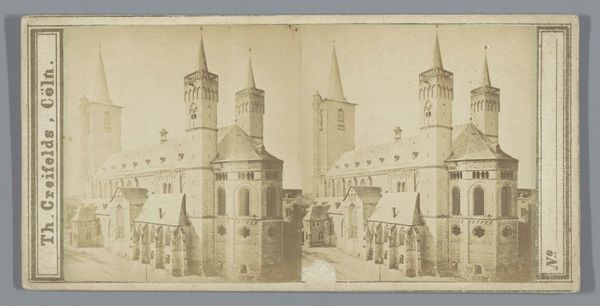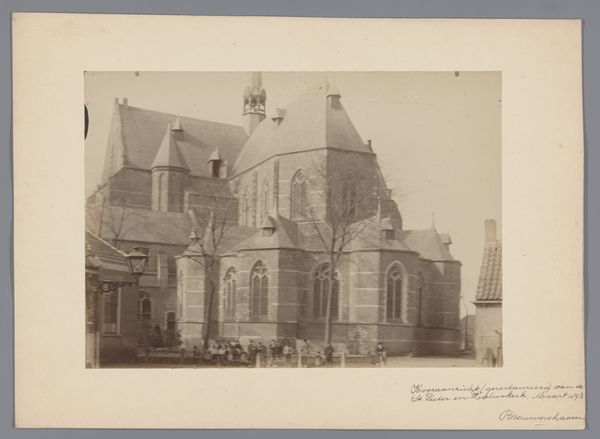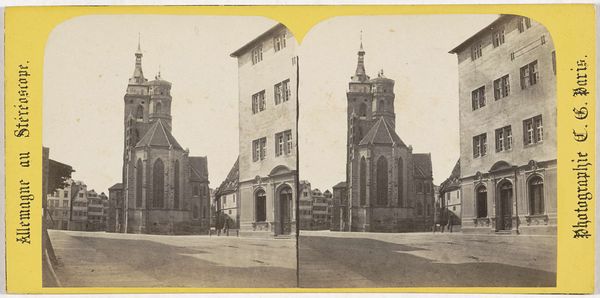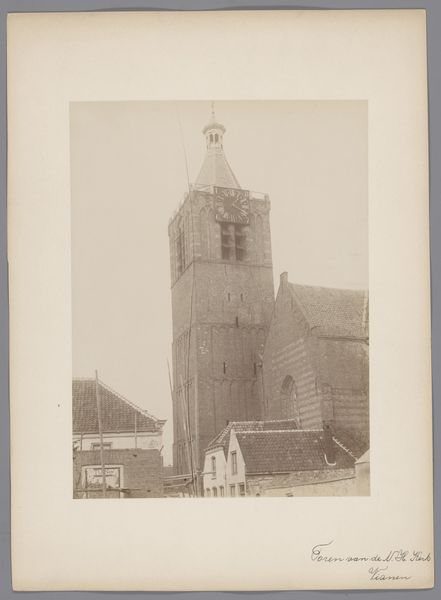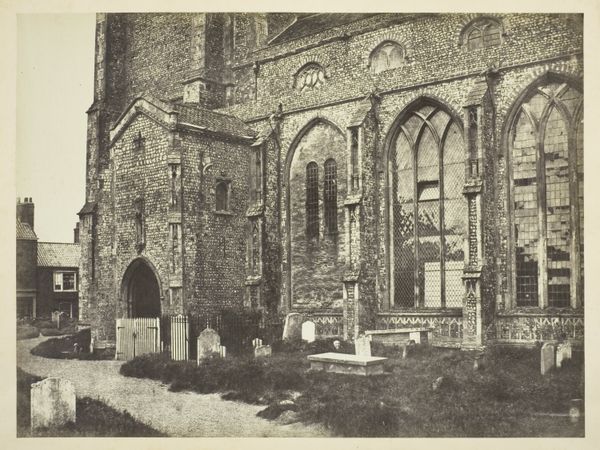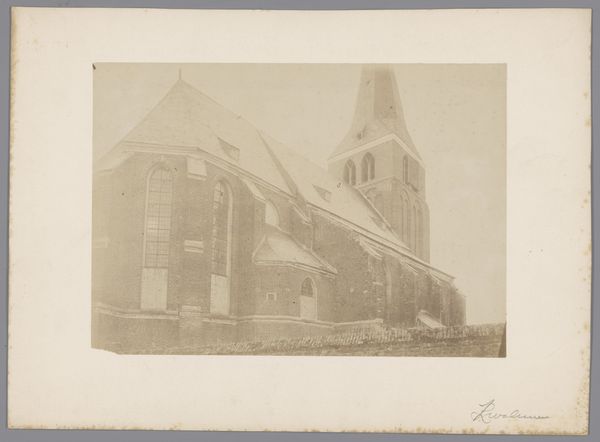
print, photography
# print
#
photography
#
cityscape
#
building
Dimensions: height 93 mm, width 134 mm
Copyright: Rijks Museum: Open Domain
Curator: This photographic print by Andries Jager, taken between 1865 and 1870, gives us a "View of the Ridderzaal in The Hague," capturing the building's imposing presence. It's currently held in the Rijksmuseum. What are your initial thoughts? Editor: An austere, solemn snapshot! The monochrome and the detail... It feels almost architectural, but colder somehow, maybe because it lacks human warmth. There’s an objectivity, almost like it's being assessed or surveilled. Curator: Exactly. Jager uses the camera to dissect the construction and its features with meticulous care. But, consider what the labor and time meant here in contrast to later approaches in photography. Here, each image was the product of intense labor. Editor: Yes! Photography was still developing as a mass medium then; creating prints required skill. Focusing our gaze here, one must question what purpose the labor served. I would guess these sorts of early photography aided in real estate endeavors; selling, planning, constructing, recording wealth in the architecture of nationhood. Curator: A great perspective. But consider the Ridderzaal’s significance beyond economics; its place in Dutch identity. The artist highlights it with an emphasis on permanence, almost divine significance as a site for royalty to convene and carry out earthly works. Notice that symmetry! Editor: You can interpret that formal approach aesthetically or culturally. What resonates with me is how even in rendering something permanent—monumental architecture, the seat of political power—the limitations of the medium create the opposite impression: The print appears transient; fragile and time-worn because of its making. A document of a monument, handled until disintegration. Curator: True; time works ironically on it. It preserves a moment while visibly aging the medium itself, changing the physical work we can touch and see. The image is then a physical embodiment of our memories surrounding the seat of governance and history it captured, shifting in form and legibility through laboring hands. Editor: That tension makes it more compelling than a simple record. It acknowledges materiality and decay within something created to defy both. It allows us to reflect critically on labor’s effect, in turn. Curator: Beautifully put! It moves the building beyond bricks and mortar, or, indeed, photographic emulsion and paper, and allows the artwork to really speak about power in the context of its time and ours. Editor: Absolutely. Materiality tells a silent story often unheard.
Comments
No comments
Be the first to comment and join the conversation on the ultimate creative platform.


